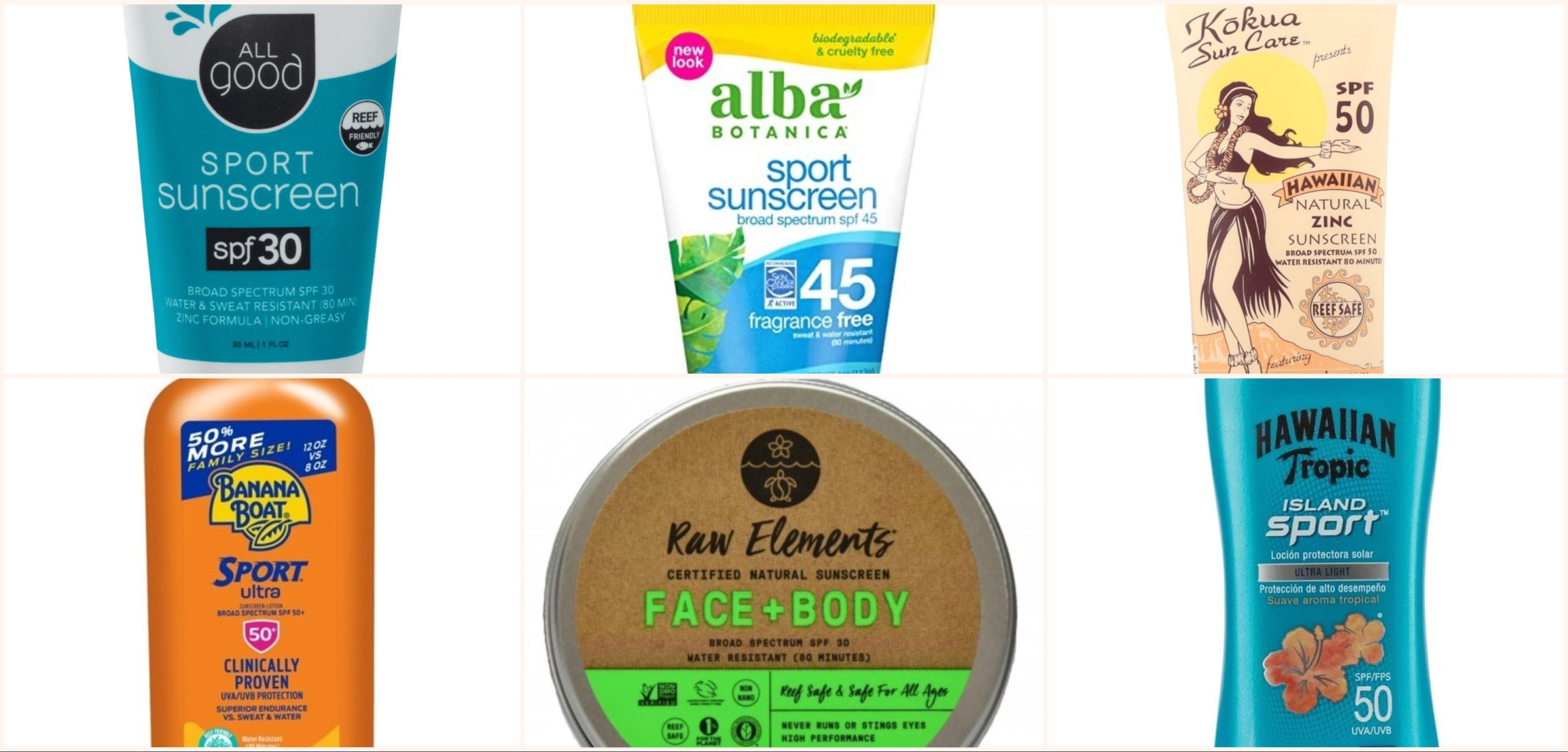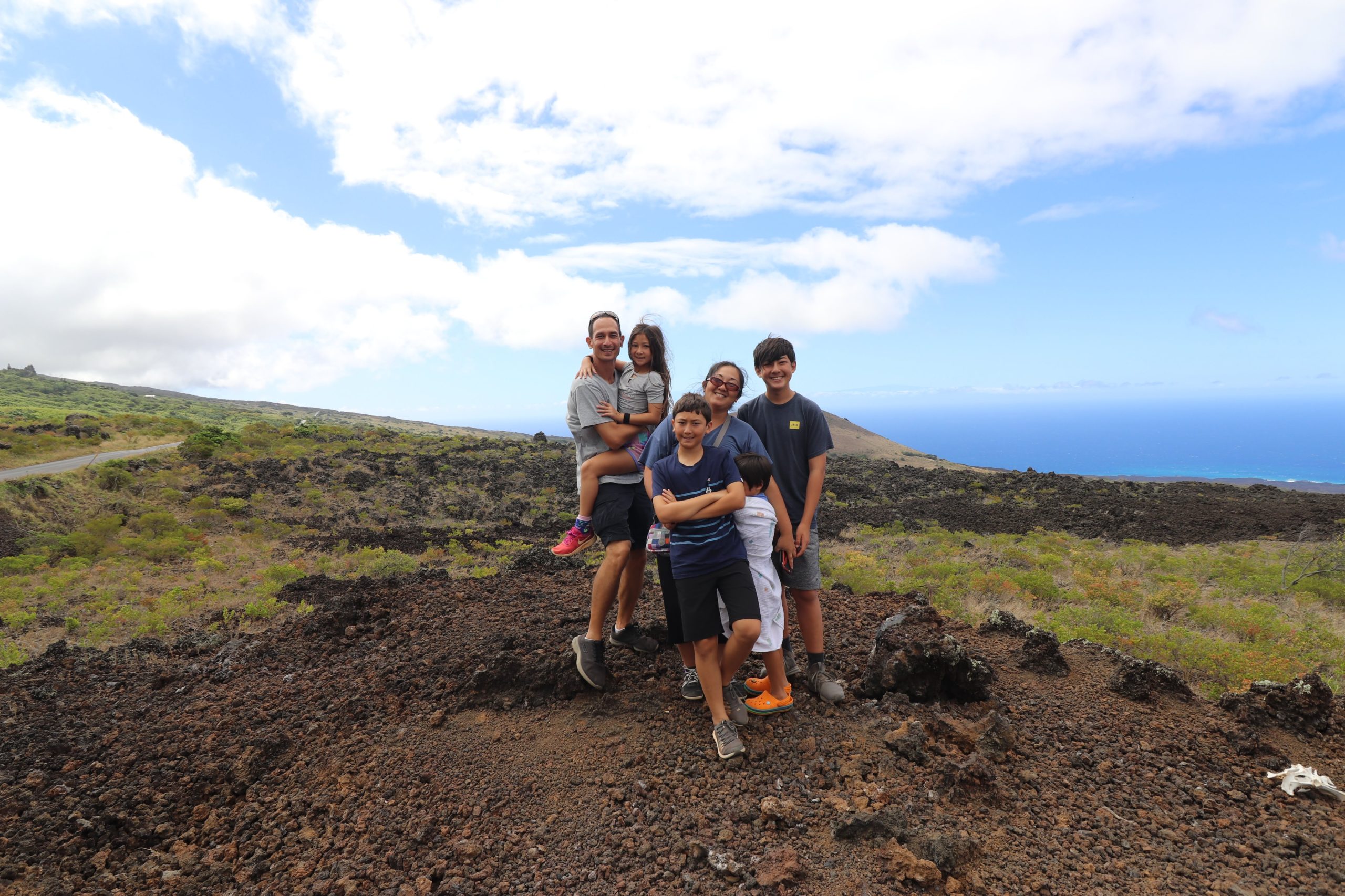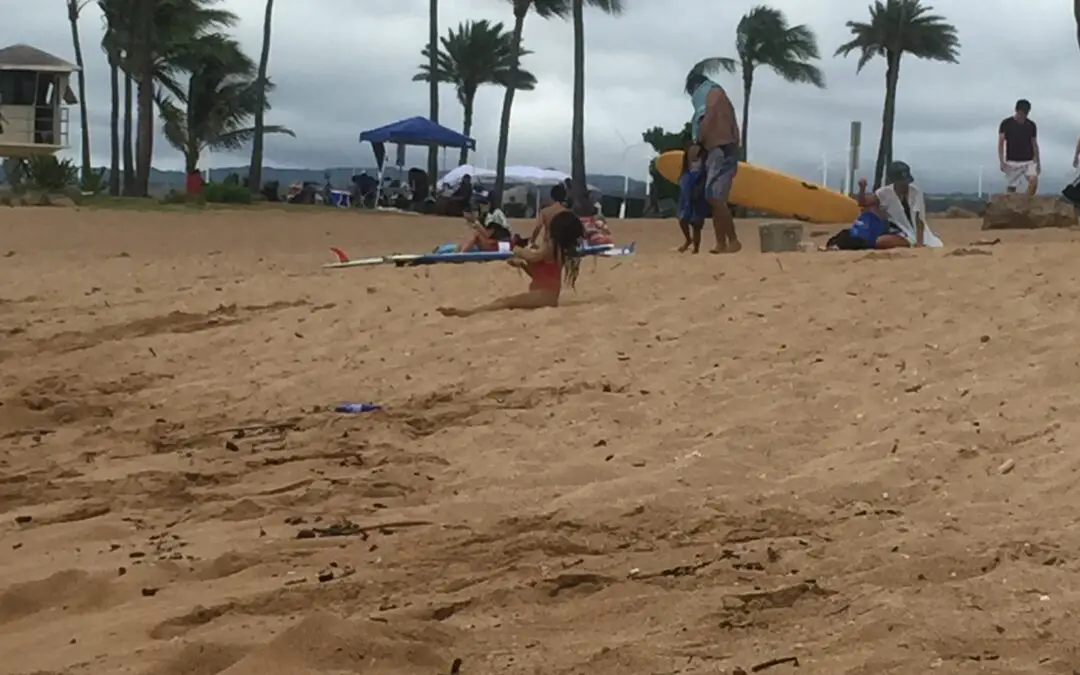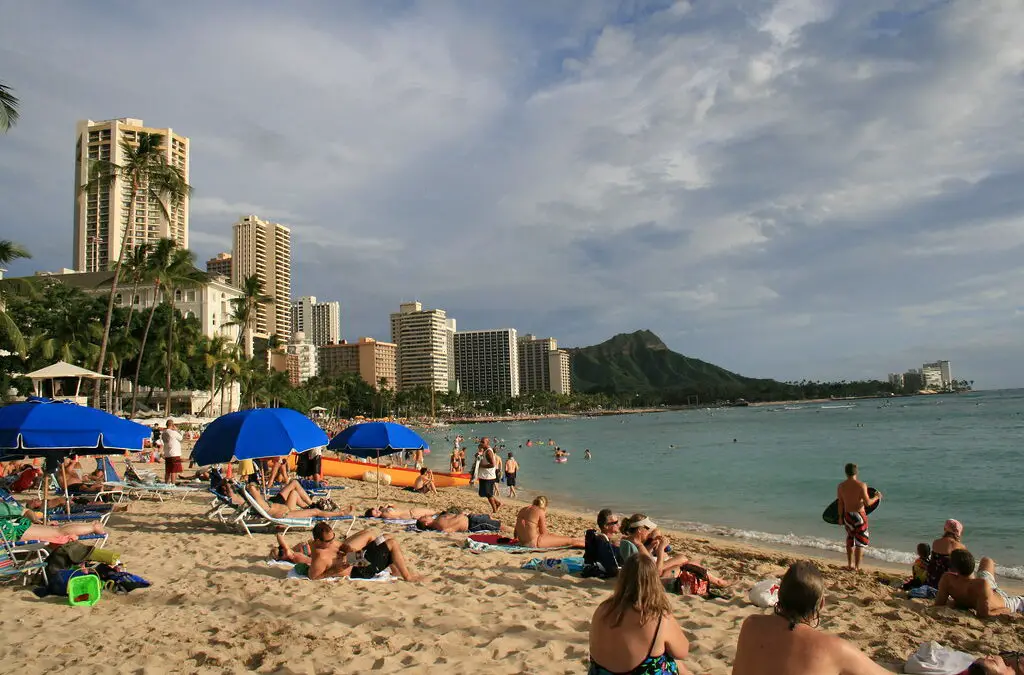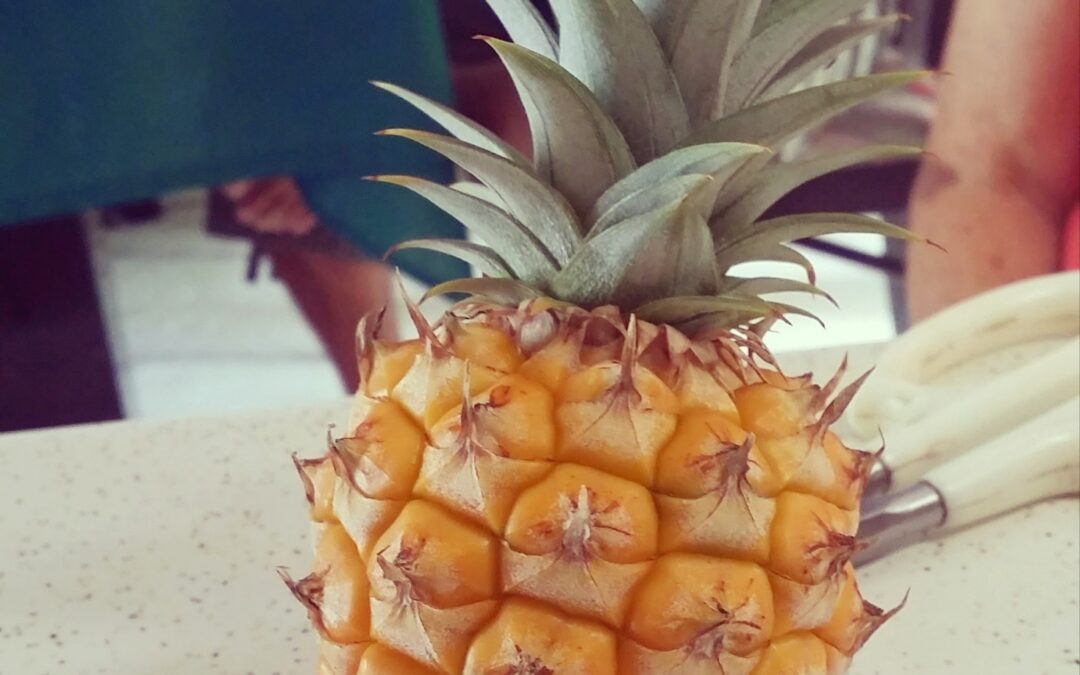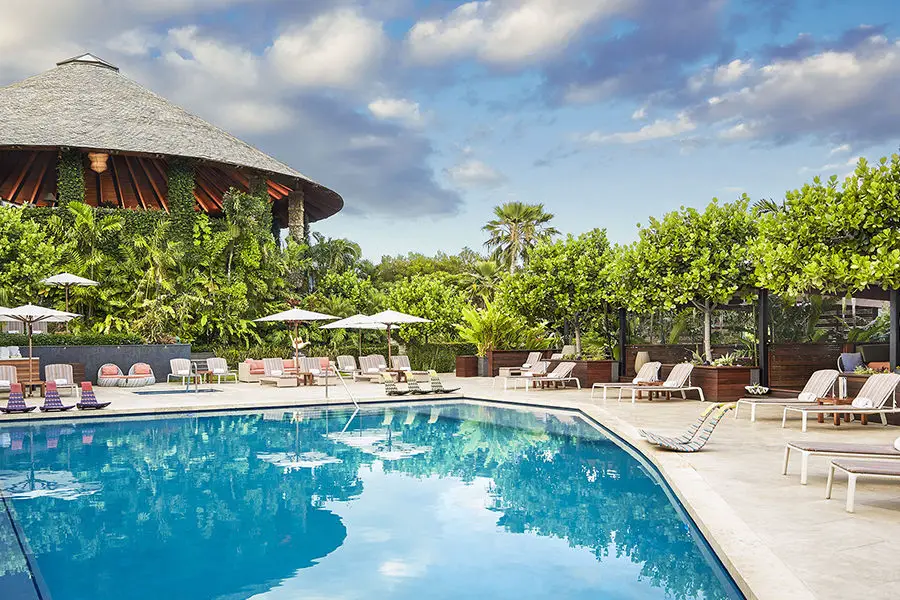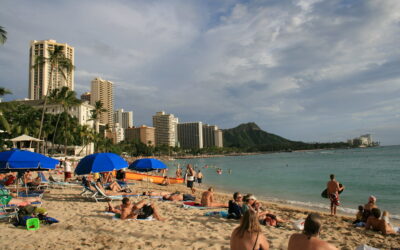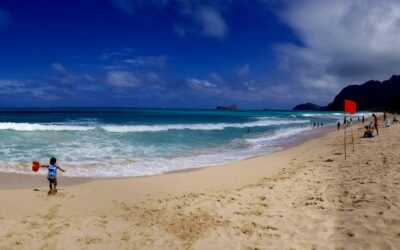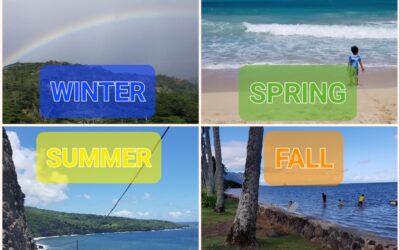It’s already 2024 and the Hawaii sunscreen ban has been in effect for a couple of years. Still, there seems to be some confusion about the law so, here’s the most up-to-date information that I could find to help you with your Hawaii vacation planning needs.
Click here if you just want to jump to our Hawaii-approved sunscreens section.
What exactly is the Hawaii sunscreen ban?
Basically, the law is to ban the sale of sunscreens containing oxybenzone or octinoxate in the Hawaiian Islands.
For those traveling to the Hawaiian Islands for the first time since Covid, this new law may come as a surprise – I guess it’s technically not new since it was created in 2018, but it became effective on January 1, 2021, and states as follows:
Beginning January 1, 2021, it shall be unlawful to sell, offer for sale, or distribute for sale in the State any sunscreen that contains oxybenzone or octinoxate, or both, without a prescription issued by a licensed healthcare provider.
That’s pretty much the law. So, if you’re wondering:
Will my (banned) sunscreen get confiscated? Will I get ticketed/fined/arrested for possessing banned sunscreens?
My answer comes in short and long versions.
For both questions, the short answer is “No.”
The ban is targeting retailers who sell sunscreen in Hawaii and, quite honestly, I don’t think Hawaii has the resources or manpower to check and eliminate every contraband item from entering the islands anyway.
The long answer is “No, but there’s really no need to be ornery about it since there’s a slew of non-banned sunscreens that can both protect Hawaii’s beautiful oceans and keep our skin safe too!”
Right now, the studies which influenced this Hawaii sunscreen ban are based on how these chemicals affect coral and marine life and so far, it’s not good. These chemicals hurt both coral and sea animals by causing DNA abnormalities, negatively impacting their development, growth, and reproductive systems. In addition, they weaken coral and contribute to coral bleaching, which then snowballs into further distress on Hawaii’s marine life and entire coral reef ecosystems.
So, while the scientists are busy conducting their studies, let’s hash out how this law affects you (and your vacation plans), shall we?
KEY POINTS FOR HAWAII’S SUNSCREEN LAW:
- In Hawaii, you won’t be able to buy sunscreens with oxybenzone and/or octinoxate unless you have a prescription from a licensed healthcare provider.
- You won’t get in legal trouble if you have and/or use sunscreen with oxybenzone and/or octinoxate. (But I’m not saying you should use the wrong kind! ????)
- This law is to help protect Hawaii’s coral reefs and marine life.
But, now that leads into:
Okay, so what kind of sunscreens can we use in Hawaii?
Okay, not get all long-winded but I’m going to break this down into two parts because there are the basic guidelines to just follow the rule verbatim and then there are guidelines to follow because you want to adhere to the intent of the law — to protect Hawaii’s oceans, protect our global environment, and/or protect your skin from potentially harmful products.
First, the bare minimum: What sunscreen should I use in Hawaii?
If you are going to buy your sunscreens in Hawaii, this should be relatively easy since all sunscreens for sale in the Hawaiian Islands are now required, via the Hawaii sunscreen ban, to not contain oxybenzone and/or octinoxate. Otherwise, if you’re planning to bring sunscreen with you, the rule is simple: when you shop for sunscreen, look for the Active Ingredients list on the back and it should have anything BUT oxybenzone and/or octinoxate. ????
Example of sunscreen labels that are allowed for sale in Hawaii*
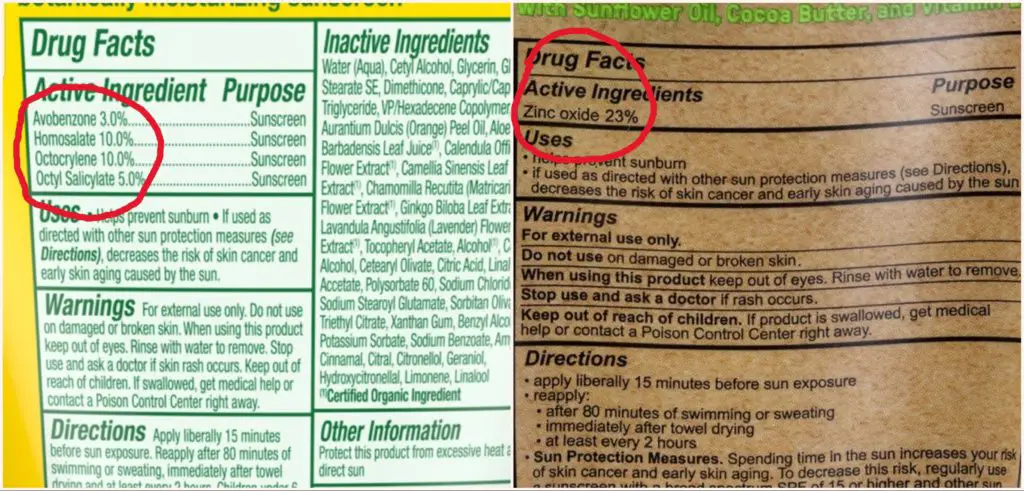
These are two examples of approved sunscreens in Hawaii. The label on the left is for chemical sunscreens and the label on the right is for a mineral-based sunscreen.
Next Following the intent of the law: What sunscreen should I use in Hawaii?
*This leads to the guidelines that take the ban one step further. If you want to follow the intent of the law — to protect marine life, and/or protect your skin from potentially harmful products — then mineral-based sunscreens are the recommended way to go. Also, two of the ingredients in the first picture – avobenzone and octocrylene – are currently listed as part of a second bill (Bill SB 132) to add those ingredients to the current ban. This bill has NOT been fully approved yet, but if it does go through, it will ban most chemical sunscreens from being sold in Hawaii.
So, with that in mind, here are some additional tips for wearing reef-safe/reef-friendly sunscreens in Hawaii:
- Look for zinc oxide and/or titanium dioxide. These sunscreens block UV rays (physical sunscreens) rather than absorb them (chemical sunscreens).
- Use lotion or cream. Ah, this suggestion gut me on a personal level because before this, I was I die-hard sunscreen spray fan: it was so easy! My kids would happily spray on their sunscreen but grouch and grumble non-stop about applying lotion or cream sunscreen. That being said, it was brought up repeatedly that spray-type sunscreens go everywhere! (This is true! I would often make my kids go 30 feet away from any human being before spraying on their sunscreen!) But that’s a BIG problem when the residual spray ends up being inhaled by bystanders or ends up sticking to the sand and getting washed into our oceans. So, the moral of this long story? Stick to lotions and creams rather than sprays to put sunscreen where it belongs – on your skin.
- Read the label. If you want to truly be conscientious about your sunscreen usage, this is important because the catchphrases “Reef-friendly” and “Reef-safe” are not regulated by the FDA, so anyone can slap it on their label. Also, within each brand, ingredients vary so if you want to stick to zinc oxide and/or titanium dioxide, make sure to read the label.
- Look for paraben-free: Butylparaben has been shown to cause coral bleaching and while many sunscreens – even prior to the Hawaii ban – were already removing parabens from sunscreen, it’s still good to double-check.
- Wear your sunscreen. Consider wearing UV-blocking clothing, hats, and sunglasses, and using UV-filtering umbrellas. Then you only have to apply sunscreen lotion on your face, legs, feet, and exposed areas of skin.
- Look for uncoated or non-nano zinc oxide and titanium dioxide. As I started searching for sunscreens, I came across ingredients or labeling that said “uncoated” or “non-nano” titanium dioxide. In a nutshell, it just means that uncoated or non-nano particle versions of zinc oxide and titanium dioxide are too large to enter our bodies and too large to hurt coral and other marine life.
- Look for “broad spectrum” sunscreens. I don’t know if this is even an issue since everything I saw has this, but basically, broad-spectrum sunscreens will protect against both UVA and UVB exposure.
FAQs on sunscreen, Hawaii, and our coral reefs:
- So, why exactly are oxybenzone and octinoxate banned?
Oxybenzone and octinoxate are chemicals used in many sunscreens to absorb UV rays to keep them from damaging your skin. Over the last decade, however, studies have shown that these chemicals have a harmful effect on our marine life, coral, and coral reefs. Also, it doesn’t take a lot of chemical exposure to cause harm. According to studies by the National Park Service, between 4000 to 6000 tons of sunscreen wash off into oceans and may contaminate coral reefs every year. In fact, prior to Covid, Hanauma Bay alone had over 400 lbs. of sunscreen in its waters per day! Gross!
- Wait, do these banned chemicals affect my body too?
With all these studies about how oxybenzone and octinoxate affect marine life, the next question is: how do these chemicals affect us? As of right now, there really isn’t any solid research to show much other than that these chemicals are being absorbed into our bloodstreams, sometimes higher than the FDA recommendations. For now, this doesn’t necessarily mean anything bad or good, it’s just unknown, so do what you think is best for you and your family.
- All this sunscreen information is overwhelming. Why bother wearing sunscreen at all?!
Oh goodness. I’ve actually had this conversation before, more than once, actually. Please wear sunscreen and/or UPF protective wear, regardless of your skin type or coloring. (Btw, people with more melanin in their skin can still get sunburned and they are definitely still at risk for skin cancer!)
Hawaii has pretty nice weather most of the time but even when it’s not “hot” the sun is still hot. What I mean is the UV index in Hawaii is always on the higher side due to our proximity to the equator so, even in the winter months or when it’s overcast and looks like rain, you can still get sunburned. Many sites recommend at least SPF 30 but I usually go with SPF 50 or higher in Hawaii. And, yes, if you’re outdoors on your vacation in Hawaii, you’ll still get a tan while wearing SPF 50+ (hopefully minus the painful sunburn, blisters, and peeling skin). Also, when you’re at the beach, know that the sun reflects off the water and back on you, okay? So, make sure you’ve got your sunscreen on.
- Is banning sunscreen ingredients weird?
Hmm, not sure but since Hawaii has banned oxybenzone and octinoxate in sunscreens, the Florida Keys and six other international locations have followed suit. Of course, we all know that there are more factors that contribute to the destruction of coral reefs than that slick of sunscreen floating across the surface of our beaches, but it’s something we can control and actively do to help out our coral reefs. All the locations that currently have bans on specific sunscreen ingredients have coral reefs and have noticed the rapid decline of our marine ecosystems. And of course, many of these locations rely heavily on tourism and have a vested interest in keeping our waters beautiful and healthy.
- What is coral bleaching and how does it affect coral reefs? What also affects coral reefs?
Coral reefs support about 25% of ocean life, even though they only occupy about 1% of the ocean floor. Hawaiian coral reefs support more than 7000 species of fish and other sea creatures, sea turtles, marine mammals, and ocean birds. Coral bleaching doesn’t kill the coral but it affects the health of the coral which makes it more susceptible to diseases and the effects of the environment (repair after damage, rising sea temperatures, pollution, etc.) Other factors that affect coral reefs are plastic pollution, global warming, and destructive fishing practices, among a few other things.
For more info about the relationship between sunscreens and coral reefs check out this video (I first found this on the website for Hanauma Bay): https://youtu.be/aGP9loQ0dqs
- How do sunscreens with zinc oxide or titanium dioxide protect my skin?
Sunscreens with zinc oxide and/or titanium dioxide protect your skin from UV sun damage by creating physical barriers to block UV rays from damaging your skin. The reason this type of sunscreen may seem unfamiliar to you or maybe you simply don’t like using them is probably because they function differently than the more mainstream chemical sunscreens. While chemical sunscreens might feel greasy or oily, physical sunscreens — aka. mineral sunscreens — tend to feel thicker and/or sticky when applied, they may be harder to remove when you shower, and they sometimes leave a white cast on your skin. Choosing to use non-nano, mineral-based sunscreen over a chemical sunscreen might feel a little bit different but there are a lot of varieties now to reduce stickiness and white cast, plus, it’ll help preserve our coral reefs so you can enjoy them the next time you visit Hawaii.
- What is the best way to apply sunscreen?
The best thing to do is read the label but often, physical/mineral sunscreens work as soon as you apply them. Chemical sunscreens usually need time to absorb into your skin, so you will need to apply them 20 minutes before you go out. Make sure to reapply your sunscreen as well (for us, this was the biggest cause of sunburn!). Typically, every 90-120 minutes; sunscreens do lose their effectiveness over time, get rubbed off when you towel dry or lie down on your beach blanket, or washed off in the water, etc.
Also, remember to put sunscreen on these often forgotten spots:
- Ears
- Back of the neck
- Lips
- Tops of feet
- Bottom of feet (especially if you’re snorkeling or sunbathing) <<< a friend told me about this one from her experience!
- Backside (if you’re snorkeling or sunbathing)
- Close to your hairline
- Areas on your head exposed by balding or thinning hair
- Are there any other ingredients I should be careful of?
In addition to the banned ingredients, oxybenzone and/or octinoxate (octyl methoxycinnamate), consider avoiding these ingredients as well: avobenzone, octocrylene, octisalate, homosalate, 4-methyl benzylidene camphor, 3-benzylidene camphor, and isopentyl-4-methooxcycinnamate. These ingredients are not part of the “banned” list but are being studied for long-term health effects; there are already studies showing the negative impacts of these chemicals on marine life and small animals.
- What is SPF? How do I know what SPF to use?
S-P-F stands for Sun Protection Factor and indicates the level of protection against sunburns by determining the amount of UV exposure it takes to cause sunburn with the sunscreen vs the amount of UV exposure to cause sunburn without sunscreen: the higher the SPF, the higher the sunburn protection. In Hawaii, I would recommend at least 30 but for our family, we always went with 50 or higher Honestly, SPF 30 – even the “sport” or “water-resistant” types – did nothing to protect my kids from sunburn. To give you an idea of their outdoor activities, most of the time when they needed sunscreen we were out on the beach, hiking up a mountain, at a poolside BBQ, or running around on a soccer field.
- Is there anyone who shouldn’t use sunscreen?
Sunscreens are not recommended for infants under 6 months. According to the FDA, infants have a higher chance of getting rashes and experiencing other effects of sunscreens. The FDA and American Academy of Pediatrics recommend keeping infants out of direct sunlight, especially during the hours of 10 AM to 2 PM, and using protective clothing if they are in the sun.
If you are sensitive to sunscreens, there are many options that are fragrance-free and with few chemicals but I would also consider wearing UV-blocking clothing as much as possible.
- Okay, I don’t know what happened but I still got sunburned, now what?
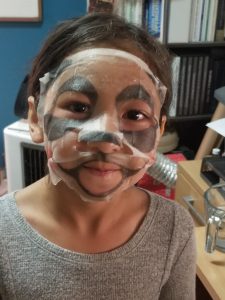
Our daughter with one of her post-sunburn sheet masks.
When I was a kid, I would have a bottle of aloe gel in the fridge and put that on my sunburns to soothe them, however, as a parent, I “upgraded” to simple, lightly moisturizing sheet masks (usually the k-beauty kind). They feel awesome on my face, I can use the excess liquid on my neck, shoulders, and other sunburned spots. Usually, by the next day, we would hardly show any signs of sunburn at all (as compared to before I found my sheet mask method). I just throw them in the fridge or freezer while everyone takes their showers, then we’ll all apply them afterward.
Once, after a beach weekend with friends, my son showed up — minus a sunburn — at school on Monday. His friends couldn’t believe that his sunburn was gone already while they all still had red, tight, and sunburned skin. He mentioned our family face mask remedy and ended up bringing half a dozen masks to school the next day. I laughed imagining all these preteen boys with their refrigerated face masks on! Hey, whatever works! Anyway, this isn’t an official, verified way to alleviate sunburns but it’s been working for my family for ten years and counting. Plus they love it!
I know this is a lot of information to take in, so below is a list of sunscreens that are approved to use in Hawaii.
Hawaii-Approved No Oxybenzone or Octinoxate Chemical Sunscreens (not in any particular order)
*Note: These contain ingredients listed on the next proposed ban for similar reasons, however, this has not been fully enacted, so as of June 1, 2022, these sunscreens ARE OKAY!
- Alba Botanica Kids Sunscreen Lotion SPF 45 (Also: All Alba Botanica Sunscreen line, except the mineral sunscreens)
- Banana Boat Ultra Sport Sunscreen Lotion SPF 50
- Hawaiian Tropic Island Sport Sunscreen Lotion SPF 50
- Blue Lizard Active Mineral-Based Sunscreen SPF 50+ (This particular Blue Lizard Sunscreen is a chemical-physical blend)
- Sun Bum Original Scent SPF 30 Sunscreen (available in lotion and spray)
- Aveeno Protect + Hydrate Moisturizing Body Sunscreen Lotion SPF 60











Last update on 2024-07-02 / Affiliate links / Images from Amazon Product Advertising API
Hawaii-Made Mineral-Based Sunscreens (not in any particular order)
- Mama KULEANA SPF 30 Reef-Safe Sunscreen https://www.mamakuleana.com/
- Little Hands Hawaii Body & Face Mineral Sunscreen SPF 35+ https://littlehandshawaii.com/
- Kokua Sun Care Hawaiian SPF 50 Natural Zinc Sunscreen
- Raw Love SPF 35 All Natural Mineral Sunscreen





Last update on 2024-07-02 / Affiliate links / Images from Amazon Product Advertising API
Mineral-Based Sunscreens (not in any particular order)
- Raw Elements SPF 30 Face & Body – *Has tinted options
- Supergoop! Mineral Sheerscreen SPF 30
- Reef Repair Suncream SPF 50+
- Blue Lizard Sensitive Mineral Sunscreen SPF 50+ **Read labels carefully, some types in this brand contain chemical sunscreens
- Manda Organic Sun Crème SPF 50
- Thinksport SPF 50+ Mineral Sunscreen
- All Good SPF 30 Mineral Face & Body Sunscreen SPF 50 – *Has tinted options
- Suntegrity Natural Mineral Sunscreen SPF 30
- Badger SPF 30 Active Mineral Sunscreen Cream
- Stream2Sea SPF 30 Sunscreen – *Has tinted options
- Olita Baby Mineral Sunscreen SPF 50
- Babo Botanicals SPF 30 Clear Zinc Lotion Sunscreen
- Biossance Squalane + Zinc Sheer Mineral Sunscreen SPF 30
- Baby Bum Mineral SPF 50 (Also: available as a roll-on lotion, spray, and stick)
- Sun Bum Mineral Sunscreen SPF 30 & 50 (The mineral line only.)
- Aveeno Positively Mineral Sensitive Skin Sunscreen SPF 50
- Aveeno Baby/Kids Continuous Protection SPF 50 (Also: available in lotion and stick)
- Australian Gold Botanical Sunscreen Tinted Face SPF 50
- TropicSport Mineral Sunscreen Lotion SPF 30 & 50
- Bare Republic Mineral Sunscreen SPF 30, 50 & 70 (Also: Baby Sunscreen Face & Body SoftStick SPF 50, Mineral SPF 50 Sport Sunscreen Spray, Mineral SPF 50 Body Sunscreen Lotion, and Mineral Sunscreen Gel-Lotion SPF 30)
- Juice Beauty SPF 30 Sport Sunscreen (Also: SPF 30 Oil-Free Moisturizer)
- Mustela Baby SPF 50 Mineral Sunscreen Lotion (Also: available in spray)
- Colorscience Sunforgettable Total Protection Face Shield SPF 50 (Also: All Colorscience mineral sunscreens)
- Alba Botanica Sports Mineral Sunscreen SPF 30, Sensitive Mineral Sunscreen Spray SPF (Also: all Alba Botanica Mineral sunscreen line)
- Banana Boat Kids Mineral Sunscreen Lotion SPF 50 (Also: Banana Boat Sports Mineral Lotion SPF 30 & 50)
- California Kids Supersensitive SPF 30+ Sunscreen Lotion (Also: California Baby SPF 30+ Sunscreen Stick, and California Baby everyday/year-round SPF 30+ Sunscreen Lotion)
- Thrive Natural Moisturizing Mineral Face Sunscreen SPF 30
I tried Organizing the information in the table below including pricing.









Last update on 2024-07-02 / Affiliate links / Images from Amazon Product Advertising API











Last update on 2024-07-02 / Affiliate links / Images from Amazon Product Advertising API









Last update on 2024-07-02 / Affiliate links / Images from Amazon Product Advertising API











Last update on 2024-07-02 / Affiliate links / Images from Amazon Product Advertising API





Last update on 2024-07-02 / Affiliate links / Images from Amazon Product Advertising API
Last Words
Have fun on your vacation and wear sunscreen! This ban on certain kinds of sunscreen isn’t a good reason to stop wearing sunscreen altogether, especially in a place like Hawaii, but it also shouldn’t be something you’re stressing about before an awesome Hawaii vacation! As you can probably tell, cost varies a lot in all the options, so pick something that makes sense for you! Hopefully, with this list, you can grab a couple of bottles, slather up, and focus on the activities you’ll be doing, like hitting the beach, tour, boat ride, or hiking trail!
We hope you’re able to find the best sunscreen that works for you! Hope you have a great Hawaii vacation! ☀️????⛱️

